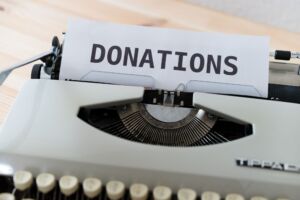GG’s Carla Pisarro provides valuable insights into the symbiotic relationship between public relations and fundraising.
In my 15+ years as a communications professional, I’ve worked with a wide range of organizations – from nonprofits and NGOs to advocacy organizations to research and higher ed institutions and more – that rely on fundraising for some or all of their income. Every organization has its own approach to raising funds, but they have in common their reliance on contributed gifts –from individual donors, institutions, or other entities – in order to operate.
Whether working in-house at a nonprofit or externally at an agency like Group Gordon, communications professionals like me receive a common question: How does PR help fundraising? Does it influence fundraising at all? Or should these be thought of as completely separate functions? In turn, can PR garner attention for news and stories that are specifically about fundraising?

In short, the answer is yes: PR is a tool, often an indirect one, that can indeed be leveraged for development purposes. At the same time, interesting fundraising news can serve as communications content and even garner earned media coverage. While these functions do usually require dedicated organizational teams and specific skill sets, communications and fundraising teams can and should benefit from drawing on each other’s work.
College alumnae love to see positive news about their alma mater in the media. Similarly, nonprofit donors typically find it rewarding to hear about the achievements of the charities they support from a trusted third-party news outlet and not just from the organization itself. Positive media coverage shows that the institution they’ve entrusted with their money is indeed making a difference in the world, whether through direct service, continuing a legacy of excellence, or by raising awareness of a vital issue.
Fundraising teams should amplify the reach of earned media coverage, by sharing positive PR directly with their donors. Those updates can take the form of personal messages to higher-level donors or be shared more widely via organizational channels, like newsletters and social media. Earned media coverage of your organization’s achievements assures donors that their contributions are having an impact – and reminds them that you need their support to keep it going.
I’ve often been asked by fundraising colleagues and clients if interesting fundraising news – such as grants received or the creative fundraising efforts of specific donors – is newsworthy. The answer is, it can be, but it’s not a one-size-fits-all approach.
Generating coverage of specific grants or gifts typically depends on their size. The bigger the gift and the higher profile the donor, the more likely it is to make news. We’ve all seen stories about MacKenzie Scott’s exceptionally generous gifts; those will inherently garner widespread coverage. For smaller scale donations and donors, this coverage takes the form of just a mention in philanthropy news roundups or columns, not a full story. If a gift helps to launch a new initiative or project, reporters often prefer to wait and see what the results of that project are, before covering it in more depth.
I’ve also successfully secured media coverage of creative fundraising efforts by individual donors or celebrity supporters. Being strategic in prioritizing stories and outlets is key here: while a donor’s hometown media might cover their fundraising endeavor, larger or national media isn’t likely to. Celebrities participating in common types of peer-to-peer fundraising, like running a marathon, may be interviewed for TV, but most people raising funds this way wouldn’t get airtime. By prioritizing your most newsworthy fundraisers and targeting the media outlets most likely to cover their efforts, you can use your capacity wisely and secure compelling stories that may even inspire new donors.
While positive PR can be used as an asset for long-term donor cultivation, it’s important to remember that it is not a direct fundraising channel. Earned PR isn’t a form of direct marketing or even advertising, both of which usually include explicit fundraising asks and channels. Communications teams cannot guarantee what a reported story will include or when or if it will run. And that ultimately is no small part of the unique value of earned media coverage – that someone else has decided your work is notable enough to inform the public about it, without your paying for it, making that story all the more credible.
Earned media is also a vital tool for building an organization’s brand and public profile, and in turn, reaching more donors. This, too, is a long game, one that won’t lead to an immediate jump in revenue but is nonetheless a crucial forward-looking investment.
By keeping each other informed and sharing noteworthy achievements, communications and fundraising teams can lift up each other’s work and collaborate more effectively. For any organization, this is a win-win.